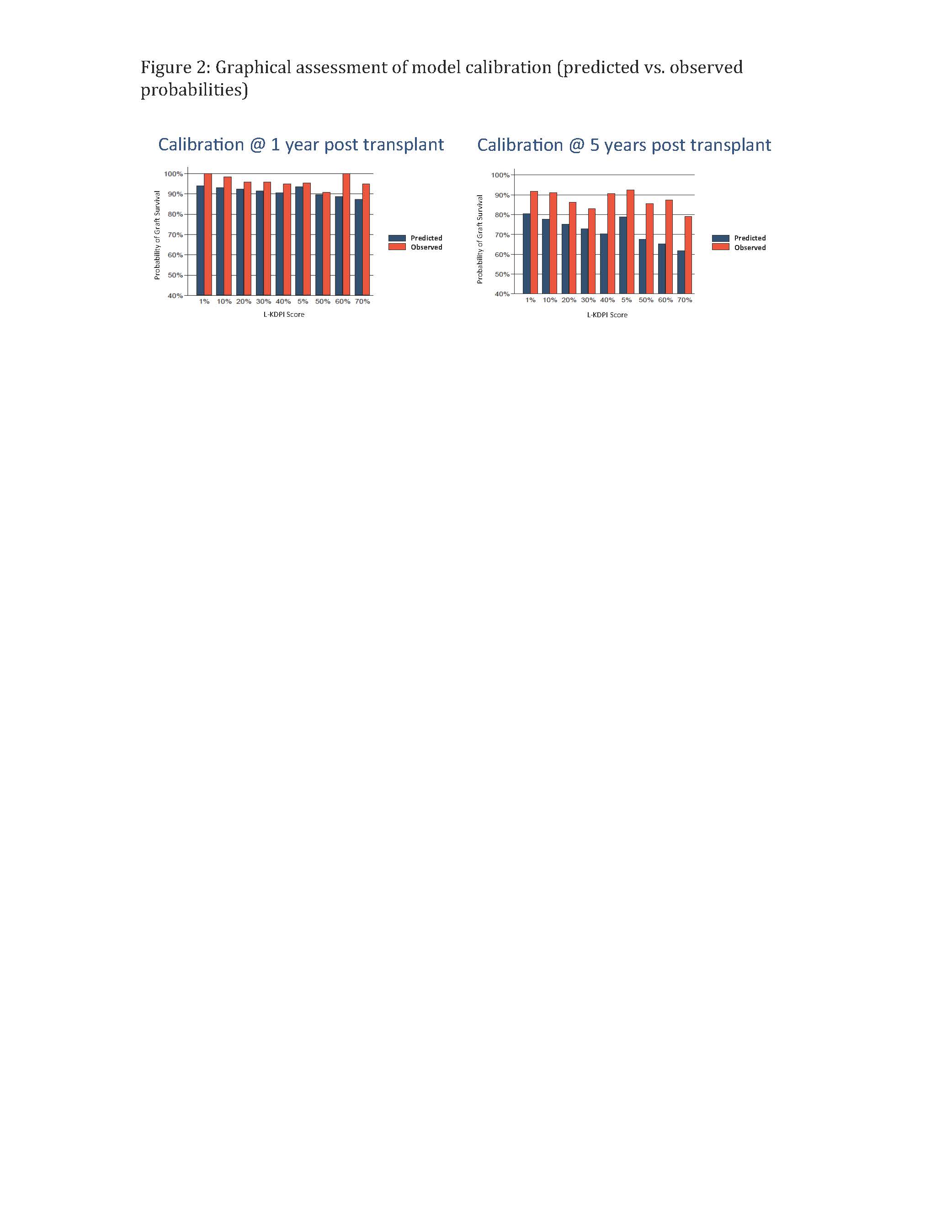External Validation of the Living Kidney Donor Profile Index (LKDPI) in the Canadian Kidney Transplant Recipient Population
1Multi-Organ Transplant Program, University Health Network, Toronto, ON, Canada, 2Department of Medicine, University of Toronto, Multi-Organ Transplant Program, University Health Network, Toronto, ON, Canada
Meeting: 2019 American Transplant Congress
Abstract number: 126
Keywords: Donation, Graft survival, Kidney transplantation, Prediction models
Session Information
Session Name: Concurrent Session: Kidney Living Donor: Quality and Selection
Session Type: Concurrent Session
Date: Sunday, June 2, 2019
Session Time: 4:30pm-6:00pm
 Presentation Time: 4:54pm-5:06pm
Presentation Time: 4:54pm-5:06pm
Location: Ballroom A
*Purpose: The LKDPI is a risk index which incorporates clinical characteristics of living kidney donors and their recipients to predict the risk of total graft failure (TGF). The LKDPI was derived in a cohort of kidney transplant recipients (KTR) from the United States. Given the differences between the US and Canadian kidney transplant populations, the purpose of this study was to externally validate the LKDPI in a large contemporary cohort of Canadian KTR.
*Methods: We conducted a retrospective cohort study including all adult first time only KTR at our institution between Jan 1, 2006 and Dec 31, 2016, with follow-up to Dec 31, 2017. Multi-organ transplant recipients were excluded. The Cox proportional hazards model was used to determine the relation between the LKDPI score and TGF. The predictive performance of the LKDPI in the Canadian cohort of KTR was evaluated: Discrimination was assessed using Harrell’s C statistic and calibration was assessed graphically, comparing observed vs. predicted probabilities of TGF.
*Results: There were 645 KTR included in the cohort. The distribution of the LKDPI of the study cohort is shown in Figure 1. The median LKDPI was 13 (IQR 1.1; 29.9). There were 43 graft failures and 52 deaths with graft function over a median follow up time of 5 years (IQR 2.7; 7.8). Higher LKDPI scores were associated with an increase in risk of TGF (Hazard Ratio per 1 unit increase in LKDPI 1.01 (95% CI 1.0; 1.02), P value 0.02)). Model discrimination was modest with a C statistic of 0.55 (95% CI 0.48; 0.61). Calibration at 1-year and 5-years post transplant is shown in Figure 2.
*Conclusions: In this Canadian cohort of KTR, there is an association between the LKDPI and the risk of TGF. However, in this external validation study, the LKDPI is not that predictive with modest discrimination and poor calibration, particularly after 1 year post-transplant. Validation of prediction models is an important step prior to clinical use in external populations. Potential re-calibration of the LKDPI or derivation of a new prediction model may be required prior to integration into the Canadian context.
To cite this abstract in AMA style:
Shantier M, Li Y, Ashwin M, Famure O, Singh SK. External Validation of the Living Kidney Donor Profile Index (LKDPI) in the Canadian Kidney Transplant Recipient Population [abstract]. Am J Transplant. 2019; 19 (suppl 3). https://atcmeetingabstracts.com/abstract/external-validation-of-the-living-kidney-donor-profile-index-lkdpi-in-the-canadian-kidney-transplant-recipient-population/. Accessed December 24, 2025.« Back to 2019 American Transplant Congress


